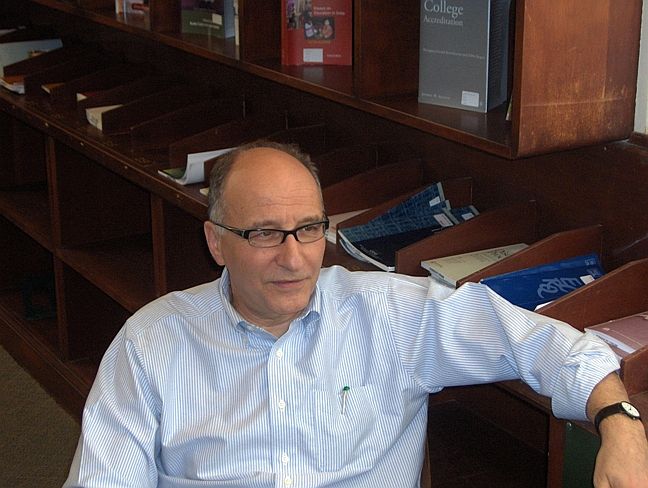How can we best access research and put it to use for the benefit of all? Enter the Public Knowledge Project, run by Education Professor John Willinsky

The intellectual inquiry occurring each day at Stanford prompts the question of how research can best be accessed and put to use for the benefit of all.
Enter the Public Knowledge Project.
The project works on how to make precious new information easily available to anyone who wants it. Education professor and project director John Willinsky has been working on the project since 1998. He began with the premise that research should be made more widely available. Since then, the project has taken a more technological direction.
It revolves around free, downloadable software that provides scholars with the means to launch new or existing journals and the option to make those journals free and publicly available. With this “open-source” option, the project aims to have many scholars join it in its mission to improve the quality of public research not only in the U.S., but also all over the world.
“We can make knowledge available online more easily, more widely and more cheaply,” Willinsky said.
The project involves mainly software developers, researchers and librarians, who together created open journals and conference systems and are currently working on an open monograph press. The journals system provides a publishing platform that allows scholars not only to make their hard-earned information widely available, but also to easily manage the journals, edit and peer-review submissions and carry out the overall publishing process.
The scholars who use the software to publish their journals do not have to go through commercial publishers. This means the project does not publish the journals itself. Rather, it facilitates the publication process so scholars can do so easily and efficiently.
More than 7,500 titles in 35 languages are using the software, half in developing countries. The journals address a wide range of topics, from arts and poetry to medicine, and can be published by anyone from a high school student to a university professor.
One of the journals is printed in Kiswahili, making it the program’s first journal in an African language.
“We are trying to help developing countries use their own language to contribute from their own perspective but still with scholarly standards,” Willinsky said.
Juan Pablo Alperin, a researcher and systems developer in the project, has spent time researching and running workshops across Latin America to discover how best to help editors in the region publish research journals.
“I see the open-access movement and the work that we do as aimed at helping journals in these regions that are not currently valued by the system achieve visibility, recognition and prestige,” Alperin said.
He and others working toward this goal around the world have found it difficult to encourage people to change how they publish their work. Alperin has been working to reverse this aversion to open forums for research by “using technology to shift the landscape of what is possible.”
Jamie O’Keeffe, a fellow researcher in the open-access movement, is making similar strides in the medical field. She is working on a journal researching the impact of open journal resources by looking at health care providers.
O’Keefe’s research is “an exploratory study to investigate the ‘current’ state of access,” she said in an e-mail to The Daily. She found through interviews with health care providers that critical decisions physicians needed to make depended on their access to particular research articles.
The project’s open conference systems allow users to easily manage large meetings. It helps them to create webpages, to schedule, to review submissions, to create registries and to organize the small but important details of conference planning.
The program is also working on an open monograph press, which will allow for free access to monographs, edited volumes and scholarly editions, many of which are especially difficult for developing countries to access.
The project plans on expanding its mission, especially in the field of student journals and in further supporting the active participation of developing countries in the global network.
The project has taken technological leaps towards making journals easily available. However, its long-term goal is to make all scholarly information openly accessible.
“About 20 percent of research is now freely available, and we are not going to stop until it is 99.9 percent,” Willinsky said.